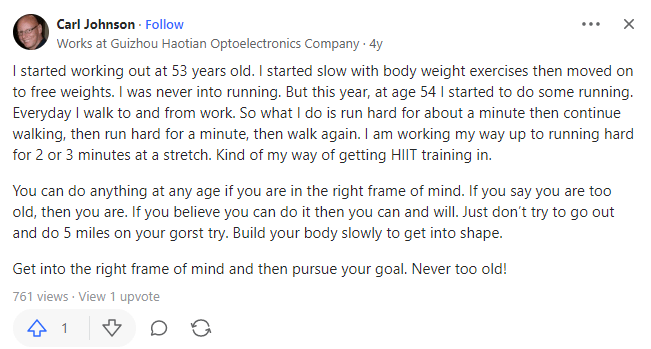Table of Contents
Have you been feeling drained lately? Getting untimed cravings that you know will lead to weight gain? Are you blaming your age for this dull routine? Rest assured! It’s time to fix your slowing metabolism. Let’s see how to increase your metabolism after 50
While we can’t reverse the effects of aging, we can aim to be in the best condition at every age we reach.
Well, you can’t disagree that every individual has different metabolism according to age, physique, general health, and muscle mass. Nonetheless, once you grow older, your metabolism tends to slow down due to hormone shifts. Your body stores more fat and loses muscles.
Fortunately, there are several steps that you can take to get back in shape and that is to increase your metabolic rate. In this article, we’ve highlighted five easy ways, backed by Science, that’ll help you completely control your metabolism.
5 Ways to Increase Your Metabolism After 50
Here are the 5 ways to make it possible
1. Active Running Daily
Regular running can rev up your metabolism temporarily and reduce your body fat percentage by tapping on your fat stores to create energy.
If you’ve been a regular runner in your adulthood, your body muscles are fully adapted to staying active and your metabolism keeps pace. On the contrary, if you’re not an avid runner, you need to gradually incorporate running into your routine.
While most people already know the physical and mental benefits of running, there’s still a heated debate over strength and cardio training. Some people go for cardio training, whereas others prevent going for long runs.
A recent research published in the Journal of Clinical Investigation insight concluded that cardio training increases your metabolism faster when compared to strength training.
Pro hack: As a beginner older runner, you can start by running or walking 20 to 30 minutes a day and gradually increase the duration of your training. Then we recommend you consult a sports expert for more advice regarding proper running shoes for seniors, running pace, and your running pattern.
Also see, How To Start Running After 50
2. Become An Early Sleeper To Regulate your Metabolism
An unhealthy sleep slows down your metabolism as you age and makes you do things that are riskier and reckless.
Therefore, if you’ve been a night owl in early adulthood, you need to transform your habit of unhealthy sleeping into an early, productive sleep.
According to several studies, being sleep deprived irregulates the hormones that control your appetite, thus causing more cravings for sugary and fatty foods that can wreak havoc on your metabolism.
Therefore, as you age, you need to shift to healthy sleeping to prevent slowing your metabolism after 50.
High-quality sleep regulates your metabolism, helps you lose weight, keeps your body energetic, and reduces risks for diseases associated with weight gain, says Dr. Michael Breus, a clinical psychologist, and sleep medicine expert.
Pro-hack: If you feel difficulty falling asleep early, try to switch off all the distractions that trigger you to delay your sleep one hour before.
3. Eat Food That Boosts Your Metabolism
Smart eating can prevent slowing down your metabolism for a few hours. Adding protein-rich foods to your diet enables your body to burn more calories by digesting, consuming, and absorbing protein-rich foods.
In Science, this is simply known as the thermic effect of food: the number of calories required to digest, absorb and process nutrition in your meals.
According to the latest studies, protein-rich foods have the highest thermic effect among all food as it elevates your metabolic rate by 15-30%, compared with 5-10% for carbs and 0-3% for fats.
Subsequently, you can increase your metabolism after 50 if you try to incorporate high-thermic foods into your diet. Such foods include:
- Chili Pepper: A crucial constituent in chili, capsaicinoids, boosts your metabolism.
- Oats: are fat-soluble fibers that require lots of calories to break down, thus, giving you more energy by increasing your metabolic rate.
- Ginger: contain gingerols that stimulate the biological activities in our body and burn calories faster.
- Nuts and Seeds: contain a good source of L-arginine, which is a good source to burn excess body fat.
These are some of the foods that can give you energy by preventing the slowing down of your metabolic rate.
4. Build Healthy Muscle Mass Overtime With Strength Training
Losing muscle mass as your age proceeds is a natural process, which is also termed Sarcopenia. Fewer muscles mean less energy, greater weakness, less metabolic rate, and fewer calories.
As confirmed by the latest research, you lose muscle mass by approximately 3-8% after 30 years of age. It further states that the rate of muscle degradation goes higher after 60.
When your muscle mass decreases, so does your metabolic rate. Declining muscle mass with age doesn’t mean you’re helpless to stop it; rather, you can build up your muscle mass with strength training and weight-lifting exercises.
You can practice several forms of resistance training to improve your muscle tone and maintain flexibility and balance,
- To increase muscle power: jumping, launching into a fast sprint, skipping, hopping, running.
- To build muscle strength: lifting free weights, such as dumbbells, kettlebells, and barbells.
- To increase muscle hypertrophy: exercising for higher reps with lesser resting period and intensity of exercise than usual.
- To build muscle endurance: squats, pushups, and chin-ups.
Pro hack: Before you begin your strength training, make sure to warm up your body with cycling, walking, or light running. Also, consult a professional coach to know which exercise is best for you.
5. Set Your Activity Goals to Manage Your Time
As you know by now, having an active day is important if you want to regulate your metabolism. When you grow older, your productive routines can sometimes get disturbed due to bad health, distractions, or mental exhaustion. To keep yourself motivated daily, plan your day by setting exercise or training goals.
You can jump-start your morning routine with an exercise or slight running to generate heat in your muscles. If you feel drained to work out in the morning or afternoon, plan a short night walk so that your muscles stay tuned.
Remember being active is one of the most important things you can do to keep your metabolism in pace.
Takeaway
Above all, fixing your metabolism is not a one-day ride. You need to gradually get a healthy, productive, and nutritional routine by implementing the strategies mentioned
earlier.
You can easily fasten your metabolic rate with an active routine that includes strength training, running, and eating enough calcium and protein-rich food.

PharmD, Salim Habib University | A Medical and Healthcare Writer





